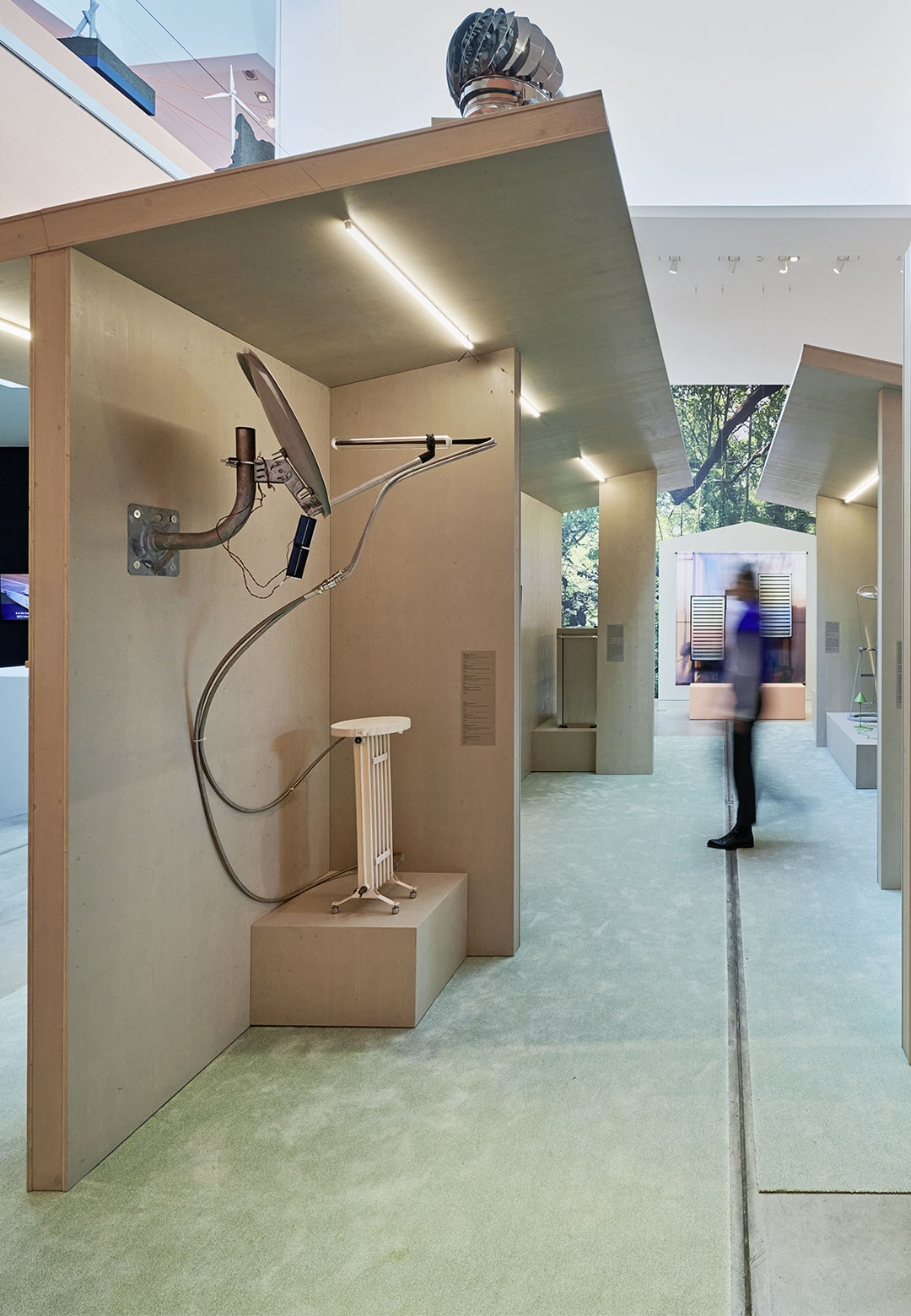Energy—an invisible, omnipresent entity, a fuel—constitutes the core of most functions of society. The force, albeit ubiquitous, can be manipulated through processes of generation, distribution and utilisation—frameworks created by humans over aeons. As the contemporary world strives to make a much called for shift to renewable energy, even regeneration, the established structures pertaining to energy come under a lens of scrutiny, revealing the critical role design plays in the ongoing transition. Delving into the metamorphosis of the energy sector through the lens of design, Vitra Design Museum in Weil am Rhein, Germany, unveils Transform! Designing the Future of Energy. Shedding light on projects of varying scales—from product designs that employ renewable energy, solar houses and wind power stations to futuristic visions of self-sufficient cities—the design exhibition remains on view from March 23 - September 1, 2024.
“What are the criteria for designing an energy-efficient product? How can design contribute to an increase in the use of renewable energy sources? How can industry, government policies and every one of us help to achieve the transition to a sustainable future?” reads the official release.
Climate change and global carbon emissions loom over the planet as formidable threats that demand deliberate counterbalance. Renewable energy sources and the design necessary to shape them play key roles in the age of sustainable energy. Design, therefore, needs to bridge scientific research and end users, innovative solutions and consumers. With this in mind, Transform! Designing the Future of Energy begins with the spotlight on human beings and their bodies, segueing into an examination of everyday objects, cities and energy landscapes. The exhibition space encapsulates examples of innovative and experimental product designs, speculative design projects, films, architectural archetypes and visionary future concepts.
Human Power
Is a human capable of generating electricity for everyday tasks? How much time would it take? In the first section of the show, visitors encounter their own potential for generating energy—both physical and political. By pedalling on stationary exercise bikes, viewers explore how long it can take to produce the required electricity for mundane tasks. In tandem, a selection of international posters and protest signs, handbills and leaflets represent the evolving energy policies—including the US government programme Atoms for Peace, the promotion of renewable energy and the civil resistance against solar power plants and wind farms installed by a global corporation—and an individual’s ability to influence them. A slideshow on the petroleumscape depicts how crude oil has moulded landscapes and lifestyles, subsequently outlining the challenges to overcome this dependence.
Energy Tools
The second section of the show, titled Energy Tools, platforms products, prototypes and experiments that can support a life ‘off-grid.’ Pauline van Dongen, in her unique oeuvre, integrates photovoltaic cells into apparel designs and fabric panels, yielding her Solar Shirt (2015) and Suntex (2022). Stefan Troendle’s Hydrogen Cooker, a prototype for a green hydrogen-powered stove, also partakes in the showcase. Papilio, a street lamp design by Tobias Trübenbacher, is self-sufficient in terms of energy owing to its built-in wind rotor. Speculative projects such as Available Networks by Pablo Bras also join the diverse repository of the show. The project delineates the possibilities of capturing the flow of energy in and around the home—whether it is the wind or rainwater. An array of historical projects such as the Solar Do-Nothing Machine created by Charles and Ray Eames supplements this section.
Transformers
The building sector and transportation sector together are responsible for a significantly large fraction of the global energy consumption. The extant frameworks and processes in the said spheres are, hence, critical areas demanding change. Transformers, the third part of the exhibition, musters such innovative interventions in architecture and mobility. Projects such as the Powerhouse Brattørkaia in Trondheim by the architectural office Snøhetta and The Day After House by TAKK architecture embody the tenets of regeneration, thoughtful spatial configuration and natural insulation—becoming contemporary models for energy-efficient and energy-producing architecture.
The rapid shift from the combustion engine to the electric motor further increases the importance of solar energy in transportation. At the forefront of this transition are experimental solar-powered automobile designs like the Covestro Sonnenwagen, photovoltaic technology by German startup Sono Motors and e-cargo bikes by ONOMOTION that achieve greater sustainability in courier and parcel services.
Future Energyscapes
Extraction of raw materials, generating or transforming power, storing and distributing energy—all levels of energy production have an associated spatial footprint. The final section of the exhibition, therefore, focuses on Future Energyscape. This body of research encompasses new typologies for energy storage, such as the Energiebunker in Hamburg or Hot Heart, Carlo Ratti’s proposal for the intermediate storage of thermal energy in Helsinki. Other visions for the future production of energy such as the wind turbine models designed by students from ECAL/Lausanne for the Canadian island of Fogo, and the hypothetical Eneropa conceived by Rem Koolhaas’ Netherlands-based think tank AMO, are also staged. Referencing historic groundwork in the field, the section also includes Herman Sörgel’s idea for a huge land mass supplied with hydroelectric power, Atlantropa project, and Buckminster Fuller’s World Game.
Transform! Designing the Future of Energy lays due emphasis on not just energy conservation but also the transformation of energy systems as a process beyond the expansion of renewable energy sources. The design of seemingly inconsequential objects and the implementation of visionary urban designs and infrastructure are indispensable in the journey. Designers and architects across the globe are already joining forces through their solutions that challenge energy-intensive lifestyles and foster a sustainable future. In the exhibition, the daunting notion of energy as one of the greatest challenges faced today is thoughtfully equalised by a more hopeful voice—energy as a series of critical opportunities for (re)shaping the world.
'Transform! Designing the Future of Energy' will remain on view from March 23 - September 1, 2024, at the Vitra Design Museum in Weil am Rhein, Germany.






 Sign in with email
Sign in with email










What do you think?